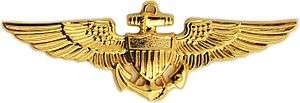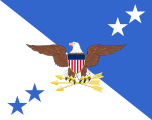Thomas Hinman Moorer
| Thomas Hinman Moorer | |
|---|---|
|
Admiral Thomas H. Moorer, U.S. Navy | |
| Born |
February 9, 1912 Mount Willing, Alabama, U.S. |
| Died |
February 5, 2004 (aged 91) Bethesda, Maryland, U.S. |
| Buried | Arlington National Cemetery |
| Allegiance | United States |
| Service/ | United States Navy |
| Years of service | 1933–1974 |
| Rank | Admiral |
| Commands held |
Chairman of the Joint Chiefs of Staff Chief of Naval Operations Supreme Allied Commander Atlantic United States Atlantic Command United States Atlantic Fleet United States Pacific Fleet United States Seventh Fleet USS Salisbury Sound |
| Battles/wars |
World War II Vietnam War |
| Awards |
Defense Distinguished Service Medal (2) Navy Distinguished Service Medal (5) Army Distinguished Service Medal Air Force Distinguished Service Medal Silver Star Legion of Merit Distinguished Flying Cross Gray Eagle Award |
Thomas Hinman Moorer (February 9, 1912 – February 5, 2004) was an admiral and naval aviator in the United States Navy who served as Chief of Naval Operations from 1967 to 1970, and as the Chairman of the Joint Chiefs of Staff from 1970 to 1974.[1][2]
|
|
Early life, education, and ancestry
Moorer was born in Mount Willing, Alabama on February 9, 1912. His father, a dentist, named his son for his favorite professor at Atlanta-Southern Dental College, Dr. Thomas Hinman. Moorer was raised in Eufaula, Alabama.
On March 31, 1970 he became a member of the Alabama Society of the Sons of the American Revolution (SAR). He was assigned national SAR member number 99,634 and Alabama Society number 759. He was later awarded the Society's Gold Good Citizenship Medal. He was also a member of the Naval Order of the United States.
Naval career

Moorer graduated from the United States Naval Academy on June 1, 1933 and was commissioned an ensign.[4] After completing Naval Aviation training at the Pensacola Naval Air Station in 1936, he flew with fighter squadrons based on the aircraft carriers USS Langley, USS Lexington and USS Enterprise.
World War II
In addition to his carrier-based fighter experience, Moorer also qualified in seaplanes and flew with a patrol squadron in the early years of World War II. Serving with Patrol Squadron Twenty-Two[5] at Pearl Harbor, Hawaii, when the Japanese Empire attacked on December 7, 1941, his squadron subsequently participated in the 1941–42 Dutch East Indies Campaign in the southwest Pacific, where he flew numerous combat missions. Moorer received a Purple Heart after being shot down and wounded off the coast of Australia on 19 February 1942 and then surviving an attack on the rescue ship, Florence D., which was bombed and sunk the same day by enemy aircraft involved in the first Bombing of Darwin.[4][6] Moorer also received the Distinguished Flying Cross for his valor three months later when he braved Japanese air superiority to fly supplies into, and evacuate wounded out of, the island of Timor.[4]
Vietnam War
Promoted to vice admiral in 1962, and to admiral in 1964, Moorer served both as Commander-in-Chief of the United States Pacific Fleet and Commander-in-Chief of the United States Atlantic Fleet — the first Navy officer to have commanded both fleets. Moorer was Commander-in-Chief of the Pacific Fleet at the time of the Gulf of Tonkin incident and ordered an internal investigation into the conflicting reports which emerged following the event.[3]
Moorer served as the Chief of Naval Operations between 1967 and 1970, at the height of U.S. involvement in Vietnam and worked closely with the most senior officers in the U.S. Military and Government.[3]
Attack on the USS Liberty
Moorer came to the conclusion that the attack on the USS Liberty in 1967 was a deliberate act on the part of the Israelis and that President Lyndon B. Johnson ordered the cover-up to maintain ties with Israel.[7][8] Moorer stated that "Israel attempted to prevent the Liberty's radio operators from sending a call for help by jamming American emergency radio channels.[And that] Israeli torpedo boats machine-gunned lifeboats at close range that had been lowered to rescue the most-seriously wounded." Moorer stated that there had been a conspiracy to cover up the event and asked whether "our government put Israel's interests ahead of our own? If so, Why? Does our government continue to subordinate American interests to Israeli interests?"[8] In a 1983 interview, Moorer said: "I've never seen a President . . . stand up to them [Zionists]. If the American people understood what a grip those people have got on our government, they would rise up in arms.”[9]
Chairman of the Joint Chiefs of Staff
Moorer served as the Chairman of the Joint Chiefs of Staff from 1970 until 1974.
While Chairman of the Joint Chiefs of Staff, Moorer personally masterminded the 1972 mining of Hai Phong Harbor and believed that if such an operation had been conducted in 1964 it would have "made a significant difference in the outcome of the war."[3]
Excerpts from Moorer's diary during his time as Chairman of the Joint Chiefs of Staff were recently declassified, most notably one in which Moorer tells the Joint Chiefs of Staff during a 1971 meeting that in a nuclear war the United States “could lose two hundred million people and still have more than we had at the time of the Civil War.”[10]
Upon completion of his second two-year term as CJCS, Moorer retired from the Navy on July 1, 1974.
Death and legacy
Moorer died on February 5, 2004, at the U.S. Naval Hospital in Bethesda, Maryland at the age of 91.[1] He is buried at Arlington National Cemetery.[2]
The National Guard Armory (Fort Thomas H. Moorer Armory) in Fort Deposit, Alabama is named after Moorer, as is a middle school in Eufaula, Alabama.
Awards and decorations
U.S. military personal decorations, unit awards, campaign awards
Foreign orders and decorations
He also has been decorated by thirteen foreign governments:

- Greece (Silver Star Medal, First Class);





_-_ribbon_bar.png)

_-_ribbon_bar.png)




_pasador.svg.png)

Civilian awards
- Stephen Decatur Award for Operational Competence by the Navy League of the United States (May 1964)
- Honorary Doctor of Laws Degree awarded by Auburn University (1968)
- General William Mitchell Award, Wings Club of New York City (February 1968)
- Member, Alabama Academy of Honor (August 1969)
- Honorary Doctor of Humanities Degree awarded by Samford University (May 1970)
- Frank M. Hawks Award for Outstanding Contributions to the Development of Aviation by the American Legion Air Service Post 501, New York City (January 1971)
- The Gray Eagle Award presented at the Washington Navy Yard (June 29, 1972)
- Gold Good Citizenship Medal, Sons of the American Revolution
- The Lone Sailor Award by the U. S. Navy Memorial Foundation (1989)
- The National Football Foundation Gold Medal (1990)
References
- 1 2 "Moorer Thomas H Obit". www.history.navy.mil. Retrieved 2016-04-18.
- 1 2 "Thomas H. Moorer, Admiral, United States Navy". www.arlingtoncemetery.net. Retrieved 2016-04-18.
- 1 2 3 4 "WGBH Open Vault – Interview with Thomas H. Moorer, 1981". wgbh.org.
- ↑ "VPNAVY – VP-22 History Summary Page – VP Patrol Squadron". vpnavy.org.
- ↑ Gibson, Charles Dana & Gibson, E. Kay 2008, p. 171, fn 7.
- ↑ "Ex-Navy Official: 1967 Israeli Attack on U.S. Ship Was Deliberate". Foxnews.com. Associated Press. 2003-10-23. Retrieved 2008-11-16.
- 1 2 Thomas Moorer (11 January 2004). "Betrayal behind Israeli attack on U.S. ship". Houston Chronicle.
- ↑ Findley, Paul (1989). They Dare to Speak Out: People and Institutions Confront Israel's Lobby. Chicago: Lawrence Hill. p. 87. ISBN 9781556524820.
- ↑ William Burr, ed. (February 15, 2017). "Top Air Force Official Told JCS in 1971: "We Could Lose Two Hundred Million People [in a Nuclear War] and Still Have More Than We Had at the Time of the Civil War". National Security Archive. Retrieved August 17, 2018.
- 1 2 3 4 5 6 7 "Thomas Hinman Moorer". Hall of Valor. Military Times. Retrieved 18 August 2018.
- ↑ "CIDADÃOS ESTRANGEIROS AGRACIADOS COM ORDENS PORTUGUESAS – Página Oficial das Ordens Honoríficas Portuguesas". presidencia.pt.
Bibliography
- Gibson, Charles Dana; Gibson, E. Kay (July 2008), "Attempts to Supply The Philippines by Sea: 1942" (PDF), Northern Mariner / Le Marin du Nord (Journal of Canadian Nautical Research Society/Société canadienne pour la recherche nautique), XVIII (Issue 3/4): 163
- Office of the Assistant Secretary of Defense (Public Affairs) (February 5, 2004). "Death of Retired U.S. Navy Adm. Thomas M. Moorer" (Press release). U.S. Department of Defense. Retrieved 2005-03-24.
- RADM Clarence A. (Mark) Hill, Jr., USN (Ret) (24 February 2004). "In Memory of Adm. Thomas Moorer (eulogy)". Archived from the original on 2004-12-05. Retrieved 2005-03-24.
External links
| Wikimedia Commons has media related to Thomas Hinman Moorer. |
- "Thomas H. Moorer, Admiral, United States Navy". Arlington National Cemetery website.
| Military offices | ||
|---|---|---|
| Preceded by U.S. Grant Sharp, Jr. |
Commander in Chief of the United States Pacific Fleet 1964–1965 |
Succeeded by Roy L. Johnson |
| Preceded by Harold Page Smith |
Supreme Allied Commander Atlantic 1965–1967 |
Succeeded by Ephraim P. Holmes |
| Commander in Chief of the United States Atlantic Command 1965–1967 | ||
| Commander in Chief of the United States Atlantic Fleet 1965–1967 | ||
| Preceded by David L. McDonald |
Chief of Naval Operations 1967–1970 |
Succeeded by Elmo R. Zumwalt |
| Preceded by Earle G. Wheeler |
Chairman of the Joint Chiefs of Staff 1970–1974 |
Succeeded by George S. Brown |

